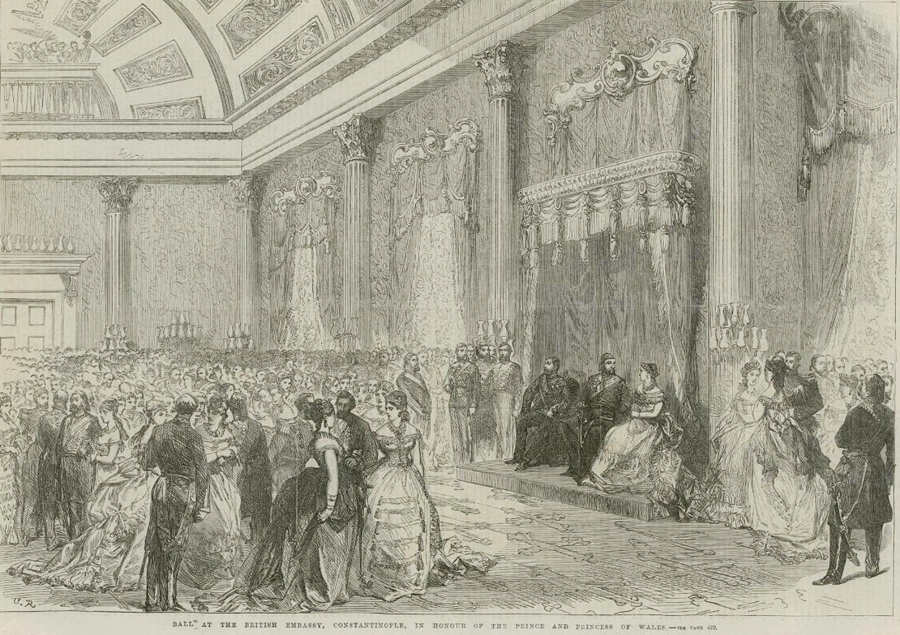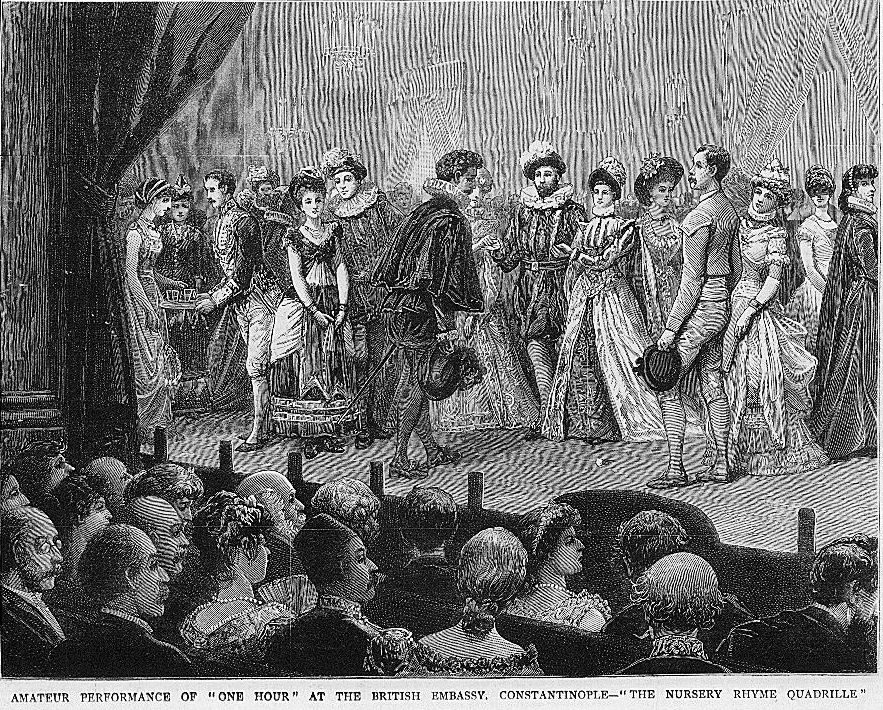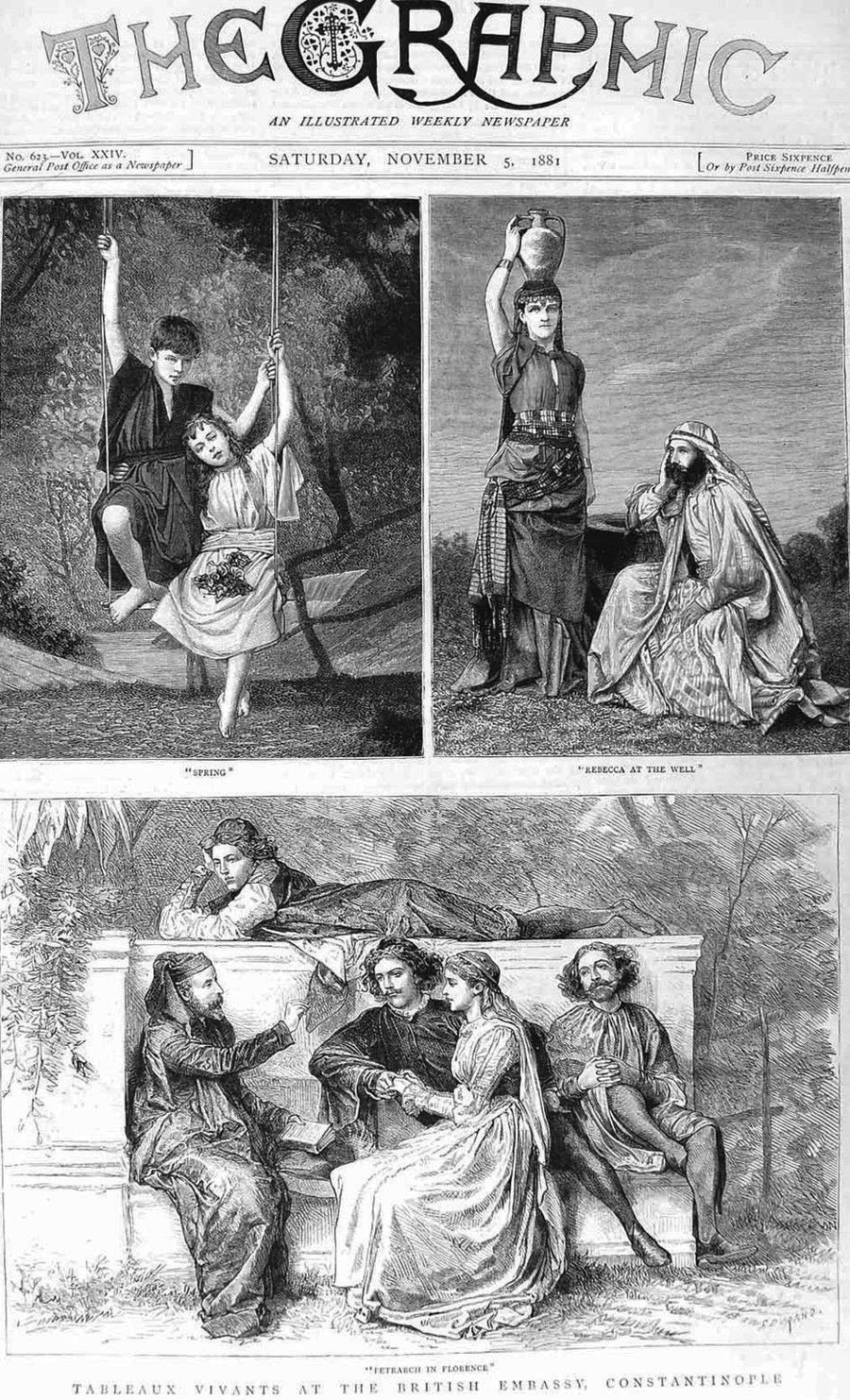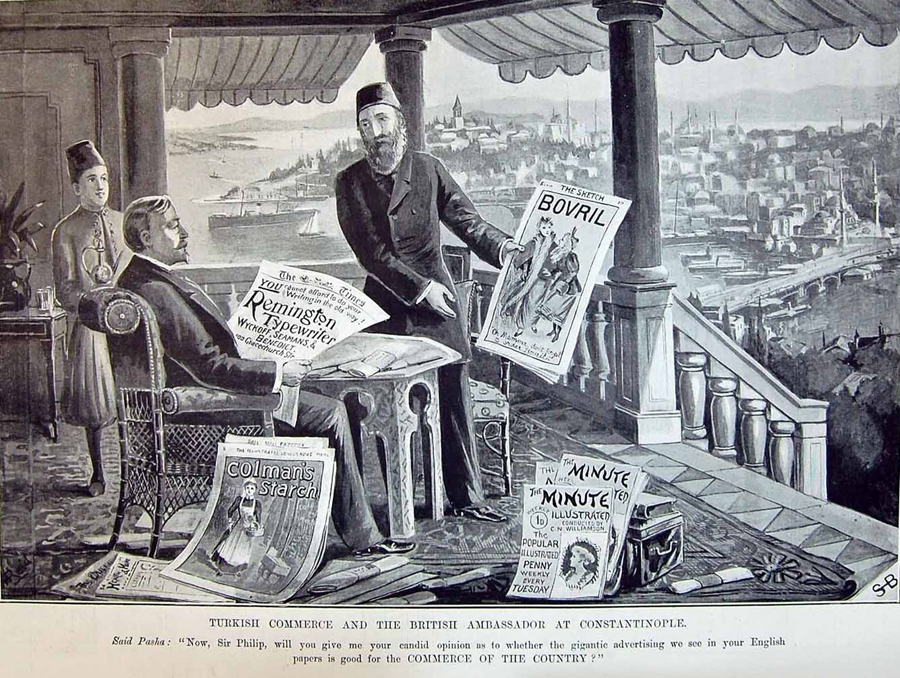
Ephemera
British embassy Constantinople
Like all the various Western embassies in the Ottoman capital, the building was the centre of its extended community of staff, expatriates, merchants and those who wished to network for their own advantage. Suptumous balls and receptions were lavish as they were also a way to signal to the wider Ottoman world the importance of this other imperial power and would have an additional trade and influence benefits beyond the social rounds of diplomats and Ottoman dignataries.

A 24 April illustration from 1869 from the London Illustrated News with the caption ‘Ball at the British Embassy, Constantinople in honour of the Prince and Princess of Wales’. It appears the Sultan of the time Sultan Abdülaziz is sitting between the Ambassador (Sir Henry George Elliot at the time) and his wife? on the podium of the gathering in the ball-room.

4th March 1882 Graphic magazine published image of ‘Amateur performance of ‘one hour’ at the British Embassy Constantinople: ‘The Nursery Rhyme Quadrille’. Presumably most if not all the performers were local British residents and it looks like the overwhelming composition of the audience were also Westerners with one fez visible, perhaps for ‘artistic license’?

Again from the Graphic magazine, dated 5th November 1881, a curious collection of illustrations of a different form of entertainment at the British Embassy in Constantinople, titled: ‘Tableaux Vivants’, suggesting the performers in this case are a visiting French troop, however not guaranteed as this once popular art form only used this French word to describe itself.
The themes seem to be a mixture of Biblical and Classical with titles ‘Spring’, ‘Rebecca at the Well’, ‘Petrarch in Florence’. Francesco Petrarca was an Italian scholar and poet in Renaissance Italy, who was one of the earliest humanists. His rediscovery of Cicero’s letters is often credited with initiating the 14th-century Renaissance. ‘Spring’ seems to be a recreation of the Pierre Auguste Cot romantic painting of 1873. Rebecca appears in the Hebrew Bible as the wife of Isaac and the mother of Jacob and Esau. The well has a central theme in the story and the composition maybe a mirror to the Carlo Maratta (1655-57) painting? It is hard to visualise in today's world how these static human performances would have been framed as, how long they lasted or were they acting as a backdrop to an informal party rather than a staged pieces to be watched by an audience.
A cartoon whose meaning may have been lost in the mists of time from the Illustrated London News 18 April 1896. The British Ambassador for the Ottoman Empire at the time was Philip Currie, so definitely referring to him. Part of the mission of all ambassadors was to boost the commerce of their country and the suggestion of this cartoon was perhaps he demonstrated too much zeal, perhaps suggesting some personal gain in representing various iconic British companies.

